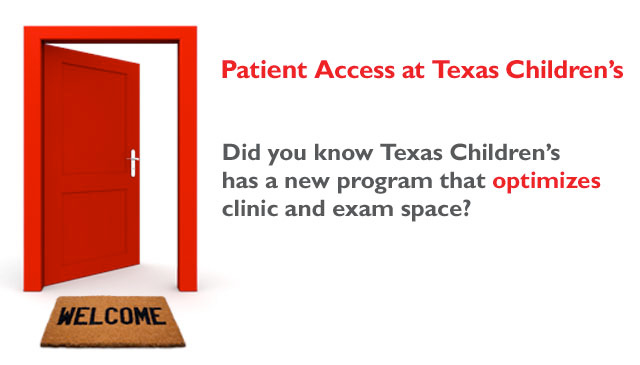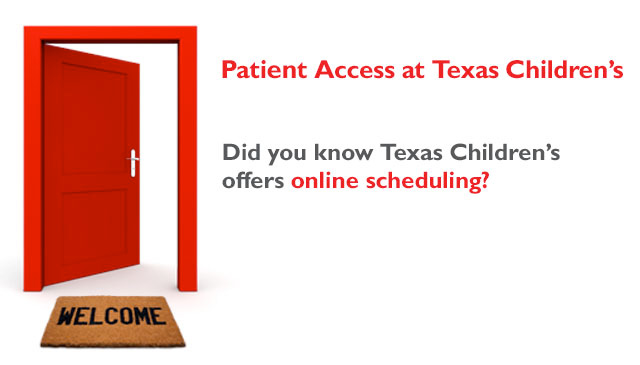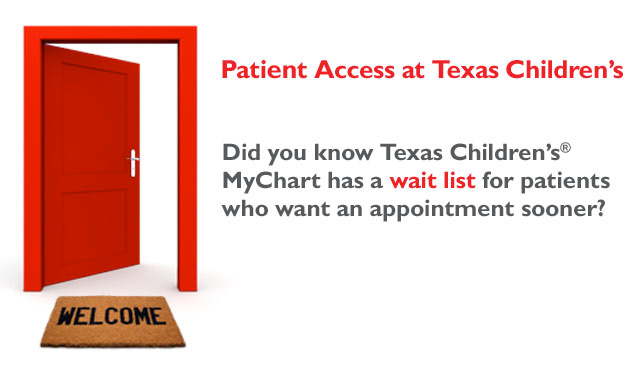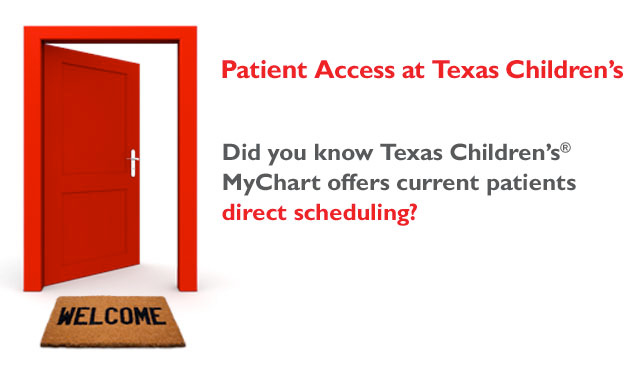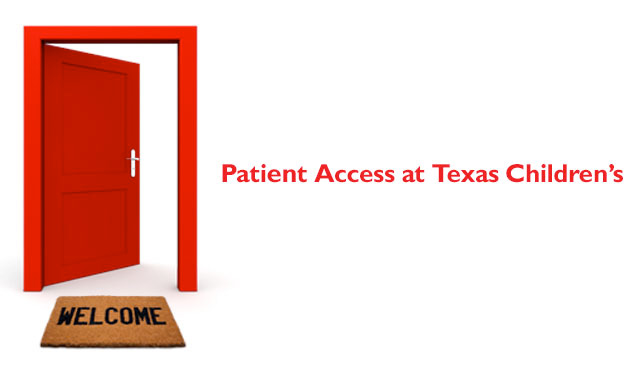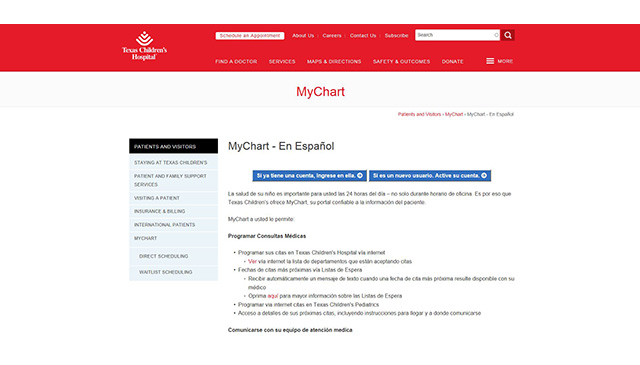January 22, 2019
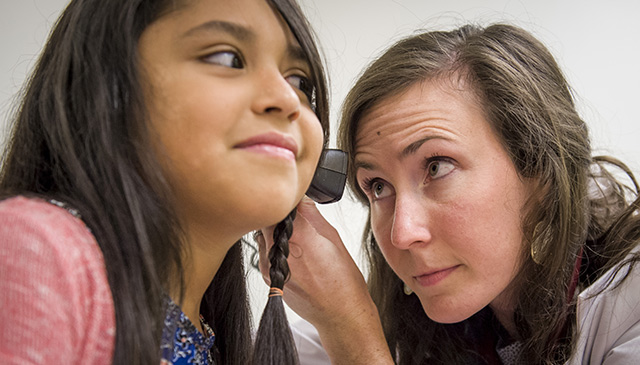
Since the launch of Patient Access 2.0 Initiative in October 2018, Texas Children’s already has received positive feedback from patient families who describe online scheduling as “simple and convenient.”
“I was surprised that Texas Children’s had this option,” wrote a Texas Children’s family. “It was very convenient and the scheduling process was very easy and streamlined.” Another patient family wrote, “I found the online scheduling button on my child’s physician’s profile page, which I love and appreciated.”
During the first wave of implementation in November, eight specialties went live with online scheduling. The online scheduling option, offered in both English and Spanish, allows current patients, new patients and referred patients to schedule appointments via DocASAP, Texas Children’s online scheduling partner. Patients and their families can also use this new online tool to schedule clinical appointments in Austin.
Patients can access the online scheduling button on Texas Children’s homepage. Once this button is clicked from the homepage, patients land on the new texaschildrens.org/appointment page and can view all scheduling options available. Patients can also access online scheduling directly from provider profiles and department pages, where the scheduling tool appears to schedule a visit with a provider.
On January 23, 11 more specialties – Adolescent Sports Medicine, Centers for Women and Children Women’s Services, Genetics, Infectious diseases, Nephrology, Neurosurgery, Otolaryngology, Pediatric Surgery, Retrovirology, Rheumatology and Orthopedics – went live with this new online feature.
The third wave of online scheduling will go live in March 2019. Once implemented, a total of 30 specialties will be offering this online scheduling option to their patients across the hospital system.
To date, 220 patients have already used DocASAP to schedule their appointments.
Space utilization initiative improves patient access, volume
A major contributor to patient access is the ability to use space within the Texas Children’s system effectively by identifying when and where space is available to optimize patient throughput.
In September 2018, Texas Children’s Space Utilization Initiative and Transition Experience (SUITE) Team tested the concept of space sharing on floors 8 and 9 in Mark Wallace Tower over a 3-month period. The purpose of this initiative was to identify any underutilized or vacant space and determine if another clinic can temporarily “touchdown” in the vacant space to see patients coming in for a clinical appointment.
The team found that provider absences whether it be PTO, conferences and inpatient service rounds equated to 10 to 20 percent of exam rooms being open at any given time. Transparency around when and where these openings occur allowed other providers to request and use the rooms for clinic sessions with their patients. Of the 103 four-hour clinic sessions requested in our first pilot, 43 sessions were accommodated.
“Partnering with the Financial Services team, we estimate an overwhelming opportunity to accommodate an additional 17,000 to 35,000 clinic visits in Wallace Tower alone, with potential to generate over $4.9M in additional margin for Texas Children’s,” said Brian Cordasco, lead for the SUITE team.
On January 14, the SUITE team launched a second pilot on floors 11, 16, and 17 in Wallace Tower that will span a period of three months to identify any opportunities for space sharing across these clinics.
The long-term goal is to apply the lessons learned from these pilots and implement a larger solution, which will include an IS portal to quickly identify space availability across the entire hospital system.
In the short time since the space testing initiative began, clinic staff have already noticed a difference.
“We appreciate this project as it has helped our clinic easily identify where and when space is available,” said Orthopedics Practice Administrator Laurie Roy. “We now have a process to quickly approve or decline requests which saves time.”
Other patient access improvements
Texas Children’s patients and their families continue to benefit from the hospital’s patient access improvements that were implemented last fiscal year. Below is an update on where we are today:
Standard clinic sessions: After evaluating 944 provider templates, additional slots were found where physicians could see patients for a duration of four hours. By standardizing clinic sessions for all specialties, 53,000 new appointments were added to the system that had not existed before.
MyChart (online patient portal) activation: Since launching the MyChart Challenge to engage teams around the patient access initiative, Texas Children’s has seen an increase in the number of patients signing up for MyChart. In Oct. 2017, the organization had less than 8,000 monthly activations compared to over 18,000 in March. To date, Texas Children’s has a total of 72,006 same-day MyChart activations.
MyChart and DocASAP direct scheduling: More than 2,000 patients have already used this MyChart feature to schedule their return appointments. In FY18, more than 20 specialties have gone live with online scheduling for MyChart users making the scheduling process easier for over 3,330 patients. To date, more than 200 appointments have been made via DocASAP.
Electronic Waitlist: Since implementing this feature on MyChart that automatically offers up available appointments via text or email to patients desiring a sooner appointment, approximately 1,000 patients have accepted an appointment on average 55 days earlier than their prior appointment.
Referrals: Referral processes were also streamlined which eliminated the 60 different referral processes that previously existed across the system, thus making scheduling visits easier. The hospital has seen a 74 percent increase in captured referrals since June 2018 with central transcription team in place.
